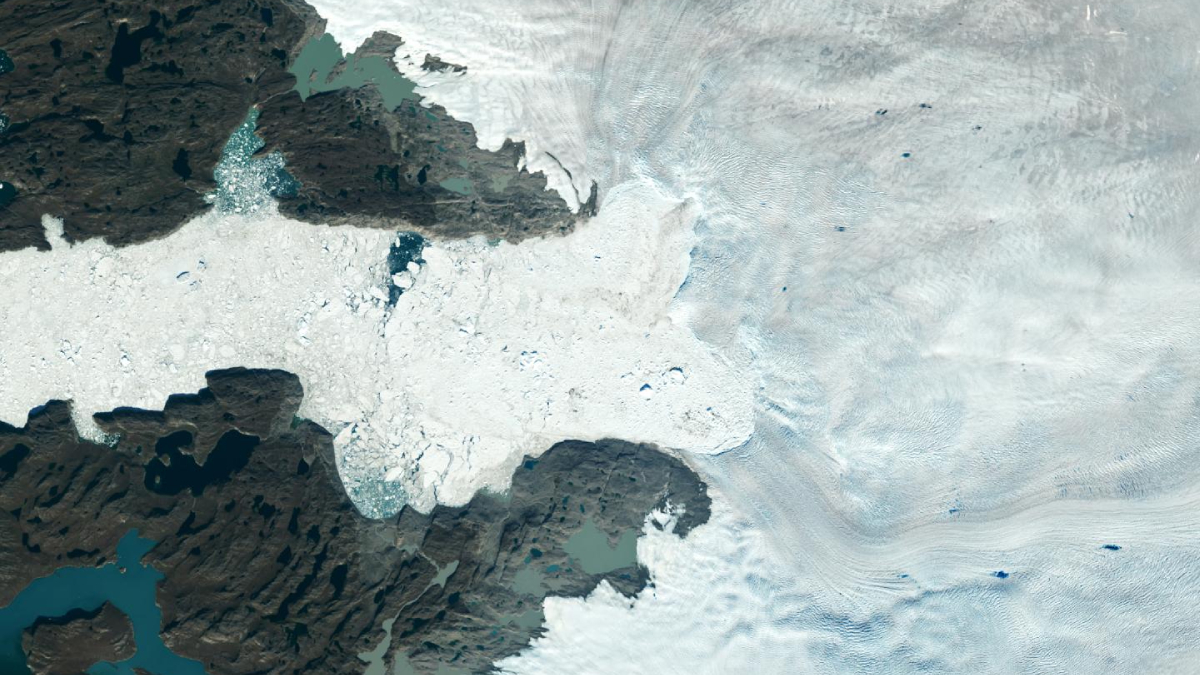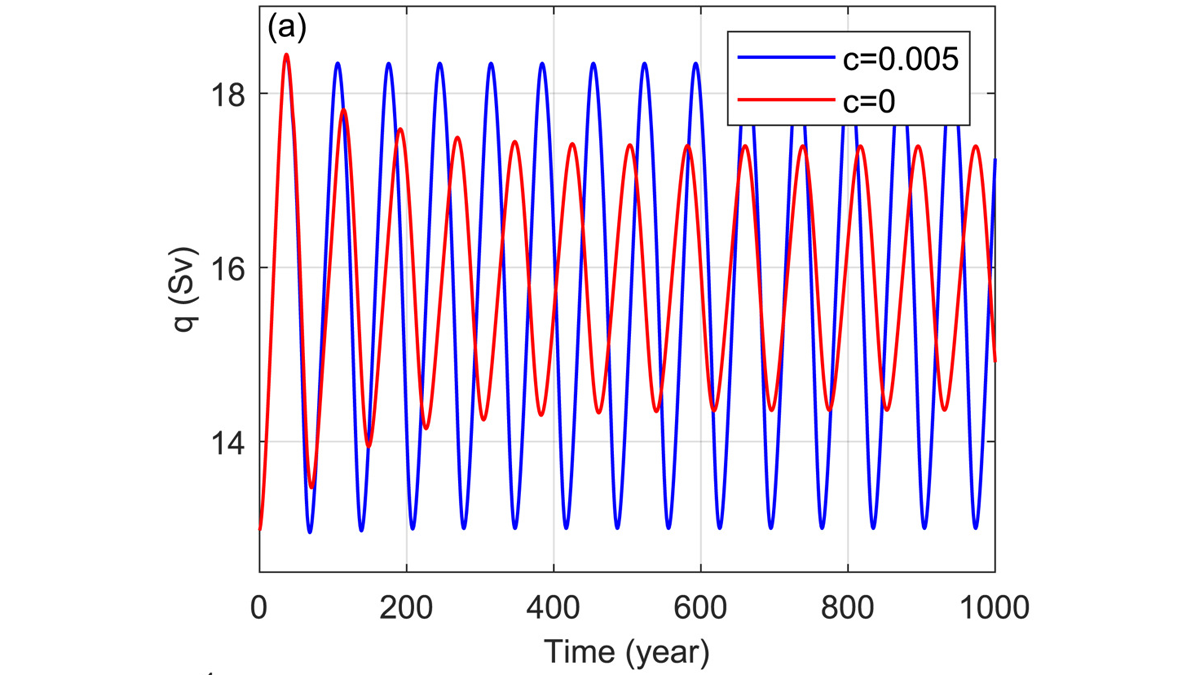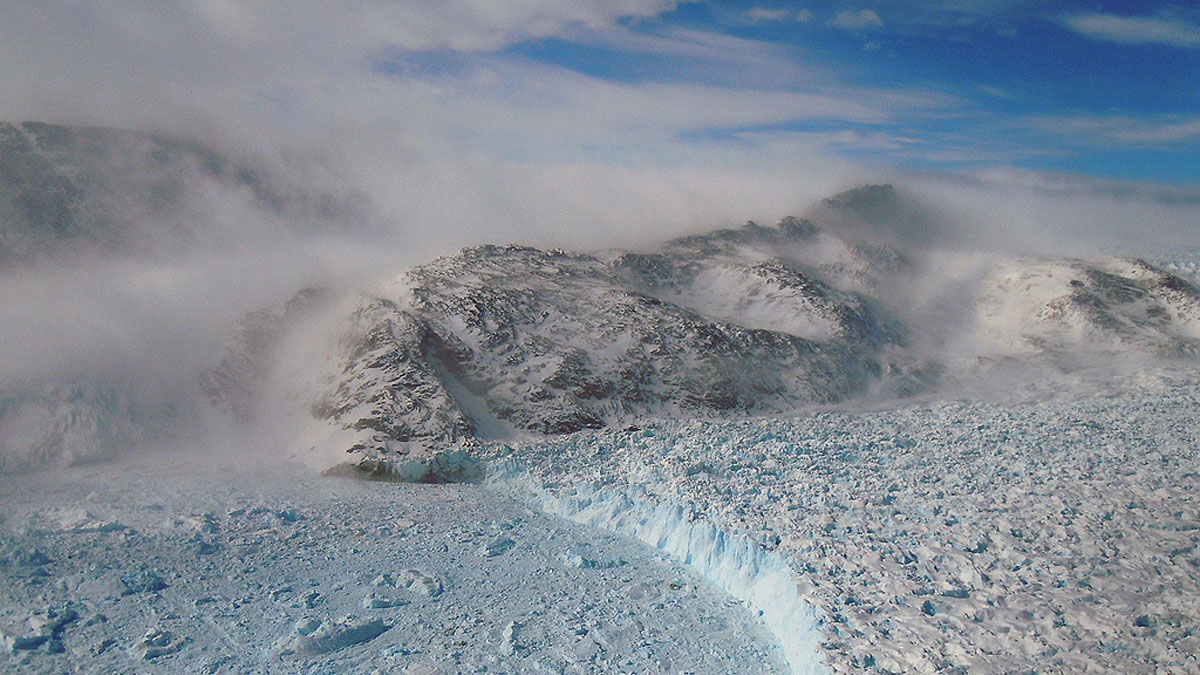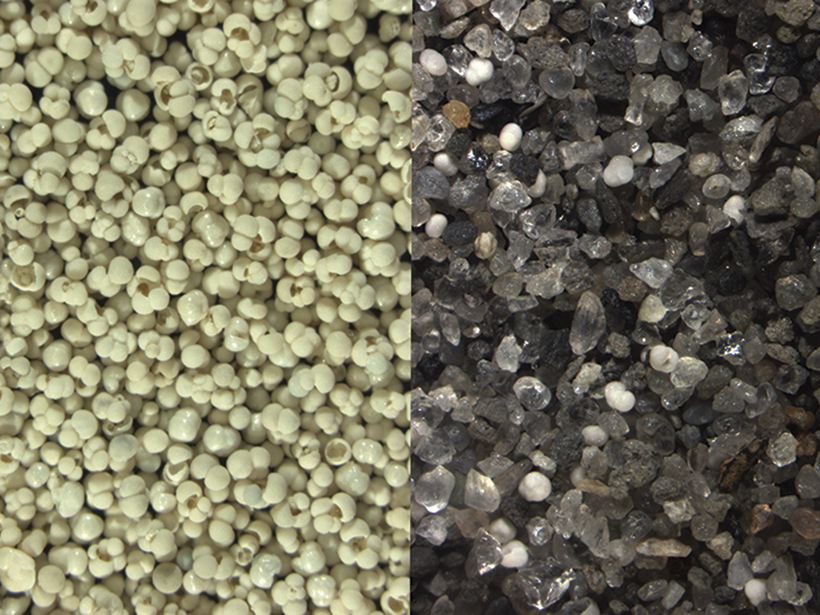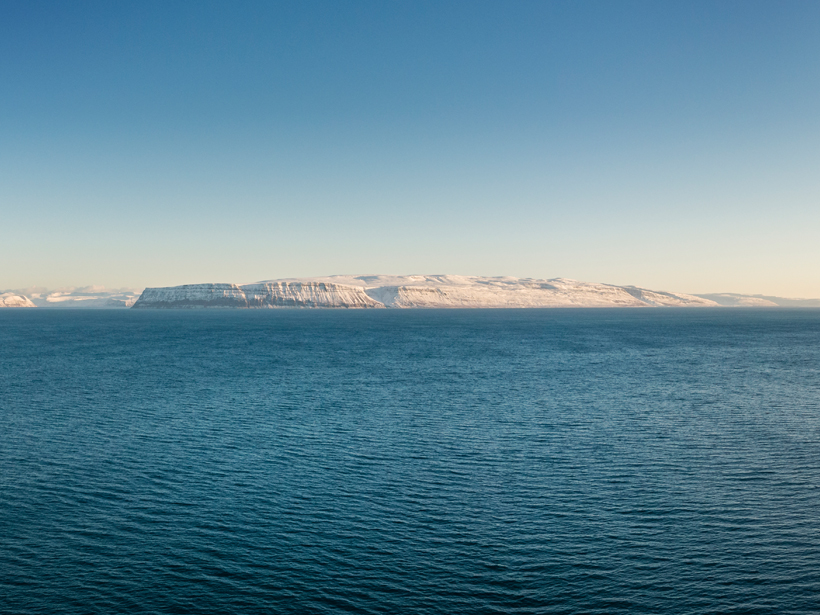The ice loss was hidden in places existing monitoring methods can’t reach, such as hard-to-map fjords. Machine learning helped scientist revise mass loss estimates and uncover patterns in glacial retreat.
AMOC
Arctic Salinity Pushes the AMOC Swing
A model of the Atlantic Meridional Overturning Circulation (AMOC), pioneered by Henry Stommel over 60 years ago, can exhibit realistic cyclic behavior if the role of Arctic salinity is included.
Nonlinear Effects of Wind on Atlantic Ocean Circulation
Simulations reveal the influence of reduced and enhanced wind stress on the Atlantic Meridional Overturning Circulation.
“Sticky” Ice Sheets May Have Led to More Intense Glacial Cycles
New research attributes a shift to longer, stronger glacial cycles to increased friction between ice sheets and bedrock in the Northern Hemisphere 1 million years ago.
Understanding Abrupt Climate Change in the Late Quaternary
During the late Quaternary period, a series of abrupt climate changes in the tropics and sub-tropics driven by changes in ocean circulation were both dramatic and disruptive.
A 50,000-Year History of Current Flow Yields New Climate Clues
The first high-resolution historical record of Europe’s Glacial Eastern Boundary Current sheds new light on ocean circulation, ice sheet dynamics, and climate change.
Larger Role for Shallow Intermediate Waters in Ocean Circulation
Water masses formed off southeastern Greenland may contribute more than previously thought to the variability of the Atlantic Meridional Overturning Circulation, which strongly influences global climate.
Atlantic Circulation Consistently Tied to Carbon Dioxide
Past ocean surface conditions suggest that over the past 800,000 years, atmospheric carbon dioxide levels typically rose on millennial timescales when Atlantic overturning was weaker and vice versa.
Theoretical Models Advance Knowledge of Ocean Circulation
A review of recent advancements highlights key insights into the Atlantic Meridional Overturning Circulation and what might be in store for future research.
Effects of Variability in Atlantic Ocean Circulation
There is strong evidence that the Atlantic meridional overturning circulation plays an essential role in Atlantic multidecadal variability and associated climate impacts.

